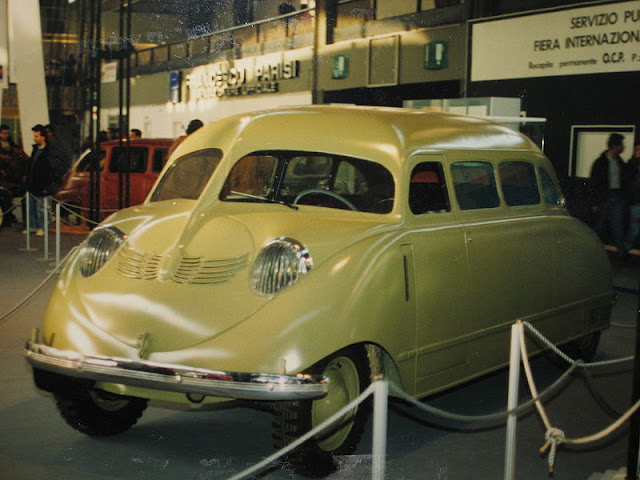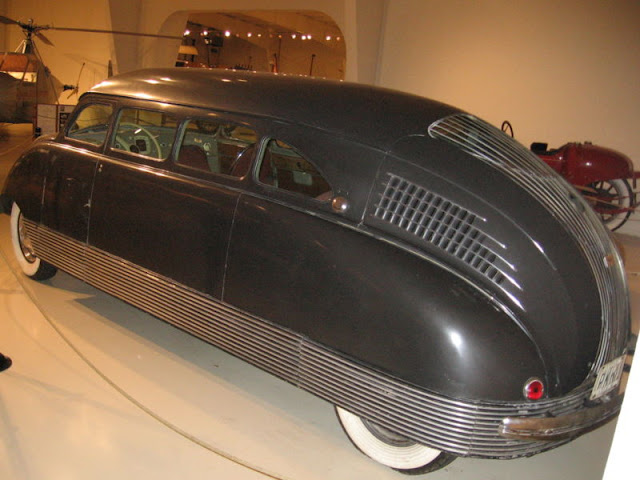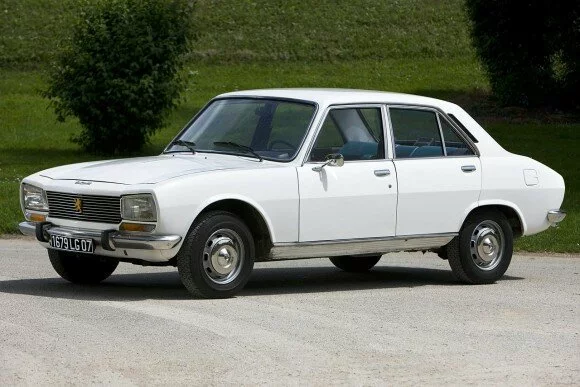November 29, 2010 – 1:38 pm
October 27, 2010 – 1:58 am
Toyota Caldina 1st Generation Specifications :
Manufacturer : Toyota
Production : 1992–1997
Body style(s) : 5-door station wagon / 5-door van
Layout : FF layout, four-wheel drive
Engine(s) : 1.5 L 5E-FE I4 / 1.8 L 4S-FE I4 / 1.8 L 7A-FE I4 / 2.0 L 3S-FE I4 / 2.0 L 3S-GE I4 / 2.0 L 2C I4 diesel / 2.0 L 2C-T I4 Turbodiesel / 2.2 L 3C-E I4 diesel.
Photo source : wikipedia.org
 Manufacturer : Citroen
Manufacturer : Citroen
 Productions : 1934-1957
Productions : 1934-1957
 Engine : V8 engine 1303 cc
Engine : V8 engine 1303 cc
 Source : netcarshow.com
Source : netcarshow.com
The Citroën Traction Avant was an automobile produced by the French manufacturer Citroën. About 760,000 units were manufactured from 1934 to 1957.
The Traction Avant, designed by André Lefèbvre and Flaminio Bertoni in late 1933 / early 1934, was the first front wheel drive car in large scale production. Cord had built front wheel drive vehicles a few years earlier in limited quantities at high prices.
The car introduced the use of an arc-welded monocoque frame, where other cars of the era were based on a frame onto which the body (“coachwork”) was built. Monocoque construction results in a lighter vehicle, and is now used for virtually all car construction, although body-on-frame construction is still suitable for larger vehicles such as trucks.
This method of construction was viewed with great suspicion in many quarters, with doubts about its strength. A type of crash test was developed, taking the form of driving the car off a cliff, to illustrate its great inherent resilience.
The novel design made the car seem very low-slung relative to its contemporaries — the Traction Avant always possessed a unique look, which went from appearing rakish in 1934 to familiar and somewhat old fashioned by 1955.
The suspension was very advanced for the car’s era. The front wheels were independently sprung, using a torsion bar and wishbone suspension arrangement, where most contemporaries used live axle and cart-type leaf spring designs. The rear suspension was a simple steel beam axle and Panhard rod with unequal trailing arms, to allow the two torsion bars to run parallel to each other, across the car’s width.
read more »
Renault Floride (1958-1968)
 Manufacturer : Renault
Manufacturer : Renault
 Productions : 1958-1968
Productions : 1958-1968
 Source : netcarshow.com
Source : netcarshow.com
The Renault Caravelle was a roadster automobile produced by the French manufacturer Renault between 1958 and 1968. Outside of North America for its first four years of production it was known as the Renault Floride.
The Floride was unveiled at the 1958 Paris Motor Show. A small rear-engined convertible designed by Pietro Frua at Carrozzeria Ghia, it used the floorpan and engine of the Renault Dauphine sedan. The now infamously slow Dauphine running gear was something of a burden for the car however and it was dubbed “a sheep in wolf’s clothing” by the media in its early years. A model tuned by Renault performance guru Amedee Gordini was sold, which produced 40 hp as opposed to the standard model’s 35. The Floride was launched in the United States and Canada as the Renault Caravelle a year after its introduction in Europe.
The car’s lack of power was aided somewhat by the replacement in 1962 of its Dauphine-derived running gear with a new 956cc engine from the recently launched Renault 8. The Caravelle name also replaced the Floride name in all markets from 1962 onwards. In 1964 another R8-derived engine of 1108cc was introduced to the Caravelle, producing 55 hp.
Tags 1958-1968, Floride, Renault |
January 23, 2011 – 10:42 pm

|
| Stout Scarab 1935 |
Specification :
Manufacturer : Stout
Production : 1935
Engine : rear-engine, Ford flathead V8, three-speed manual, transaxle transmission.
Additional Information : The Scarab was unlike other cars of the era. Virtually all production cars at the time used a separate chassis and body, with a long compartment in the front, housing the engine, longitudinally placed behind the front axle, and a rearward passenger compartment. The front-mounted engine would typically drive the rear axle through a connecting prop-shaft running underneath the floor of the vehicle. This layout worked very well, but had severe limitations where space utilization was concerned.
Source : http://en.wikipedia.org

|
| Stout Scarab 1935 |
April 29, 2011 – 11:32 pm
 Manufacturer : Alfa Romeo
Manufacturer : Alfa Romeo
 Productions : (1923-1925)
Productions : (1923-1925)
 Engine : 2.0 L straight-4
Engine : 2.0 L straight-4
 Source : netcarshow.com
Source : netcarshow.com
Alfa Romeo RM was produced between 1923-1925, it was based of RL model. Car was introduced first time in 1923 Paris Motor Show and total production was around 500 cars. As most of Alfa Romeo cars this was also used in racing purpose. Three versions was made: Normal, Alfa Romeo RM Sport and Unificato. Sport had raised compression ratio and Unificato had longer wheelbase and slightly bigger engine. RM top speed was around 90 km/h (56 mph).
Models
- Alfa Romeo RM Normal, 1944 cc 40 bhp (1923)
- Alfa Romeo RM Sport, 1944 cc 44 bhp (1924)
- Alfa Romeo RM Unificato, 1996 cc 48 bhp (1925)
Toyota Cressida First Generation X30-X40 1978-1980
 Manufacturer : Toyota
Manufacturer : Toyota
 Productions : 1978-1980
Productions : 1978-1980
 Engine : 1.8 L 3T I4, 2.0 L 18RI4, 2.6 L 4M I6, 2.6 L 4M-E I6 EFI
Engine : 1.8 L 3T I4, 2.0 L 18RI4, 2.6 L 4M I6, 2.6 L 4M-E I6 EFI
 Transmission : automatic transmission and 5-speed manual
Transmission : automatic transmission and 5-speed manual
 Source : wikipedia.org
Source : wikipedia.org
The first generation Cressida (designated X30 series) was available as a sedan(X30, X32), estate wagon (X35, X36) or hardtop coupe (X30, X31). In Japan, it was sold as both the Toyota Mark II and the more upmarket Cressida.
Depending on the market it was sold in, it had the 4M carbureted engine (MX32, MX36), the 18R engine (RX30, RX32, RX35) or 3T engine (TX30). The North American models started with the carbureted 4M engine (MX32) but in mid 1978 the fuel injected 4M-E replaced its carbureted counterpart – this was one of the first Toyotas in the US to use fuel injection. In 1979, the MSRP in the US was US$9,190. In New Zealand, where it was locally assembled and sold in a highly specified GL form, it had the 18R engine.
Toyota Cressida First Generation X30-X40 1978-1980
Standard features included air conditioning, automatic transmission (a 5-speed manual was available), power steering, rear seat armrests, AM/FM cassette stereo with amplifier, reclining front seats, and a rear window defroster. The automatic transmission was a four speed overdrive with an overdrive lockout. Power windows were optional. Soundproofing was extensive, and the Cressida was famous for being one of the quietest cars on the road at the time.
1977 Toyota Cressida Coupe
In the United Kingdom, the Cressida was available in both sedan and wagon bodystyles. The only engine available was the 18R and there was one trim level, badged De Luxe. Contrary to popular belief, it was not the same as DX specifications on other Toyota cars, but a more upmarket version of the DX trim level. The Toyota Carina sedan and wagon also sold in the United Kingdom at this time were also badged as De Luxe (but rebadged as DX from 1980 onwards).
 Manufacturer : Jaguar
Manufacturer : Jaguar
 Productions : 1954-1957
Productions : 1954-1957
 Engine : initially 3.4L and eventually uprated to 3.8 litres in the late fifties
Engine : initially 3.4L and eventually uprated to 3.8 litres in the late fifties
 Source : netcarshow.com
Source : netcarshow.com
The Jaguar D-Type, like its predecessor the C-Type, was a factory-built race car. Although it shared the basic straight-6 XK engine design (initially 3.4L and eventually uprated to 3.8 litres in the late fifties) with the C-Type, the majority of the car was radically different. Perhaps its most ground-breaking innovation was the introduction of a monocoque chassis, which not only introduced aircraft-style engineering to competition car design, but also an aeronautical understanding of aerodynamic efficiency. The Jaguar D-Type was introduced purely for competition, but after Jaguar withdrew from racing, the company offered the remaining, unfinished chassis as the roadgoing Jaguar XK SS, by making changes to the racers: adding an extra seat, another door, a full-width windshield and primitive folding top, as concessions to practicality. However, on the evening of 12 February 1957, a fire broke out at the Browns Lane plant destroying nine of the twenty five cars that had already been completed or in semi-completion. Production is thought to have included 53 customer D-Types, 18 factory team cars, and 16 XKSS versions.
read more »
 Manufacturer : Alfa Romeo
Manufacturer : Alfa Romeo
 Productions : 1925-1954
Productions : 1925-1954
 Engine : 6C refers to a straight 6 engine
Engine : 6C refers to a straight 6 engine
 Source : netcarshow.com
Source : netcarshow.com
The Alfa Romeo 6C name was used on road, race and sports cars made between 1925-1954 by Alfa Romeo. 6C refers to a straight 6 engine. Bodies to these cars were made by coachbuilders such as James Young, Zagato, Touring, Castagna, and Pininfarina. Starting from 1933 there was also a 6C version with a factory Alfa body, built in Portello.
In the mid-1920s, Alfa Romeo RL was considered too large and heavy, so a new development began. The Alfa Romeo 6C 1500 was introduced in 1925 at Milan, production started 1927, with the P2 Grand Prix car as starting point. Engine capacity was now 1487 cc, against the Alfa Romeo P2′s 1987 cc, while supercharging was dropped. First versions were bodied by Young and Touring.
 Peugeot 504 1968-1983 Specifications :
Peugeot 504 1968-1983 Specifications :![]() Manufacturer : Peugeot
Manufacturer : Peugeot![]() Productions : 1968-1983
Productions : 1968-1983![]() Engine : 1.8 L I4, 2.0 L I4, 1.9 L I4 diesel, 2.1 L I4 diesel
Engine : 1.8 L I4, 2.0 L I4, 1.9 L I4 diesel, 2.1 L I4 diesel![]() Transmission : 4-speed manual, 3-speed automatic, 5-speed manual. read more
Transmission : 4-speed manual, 3-speed automatic, 5-speed manual. read more 










